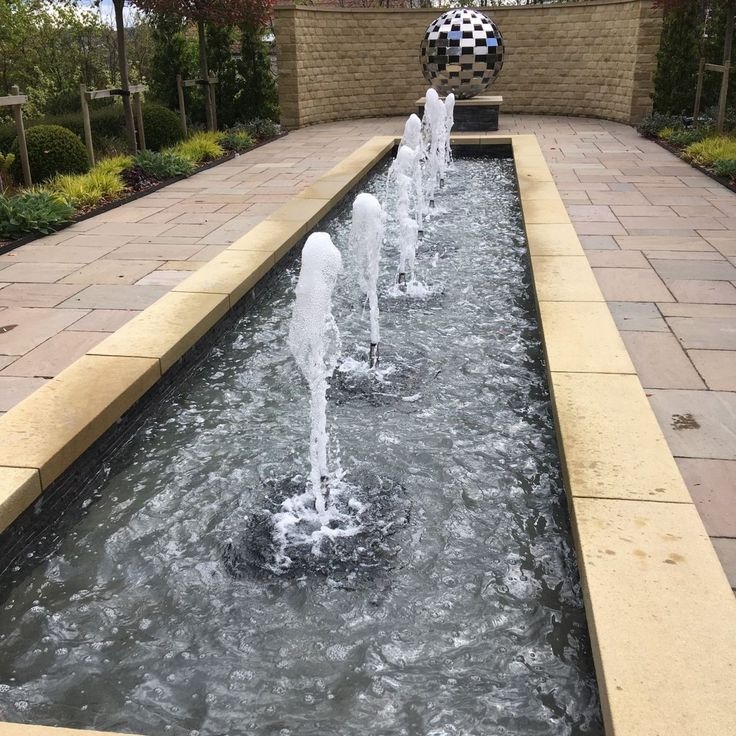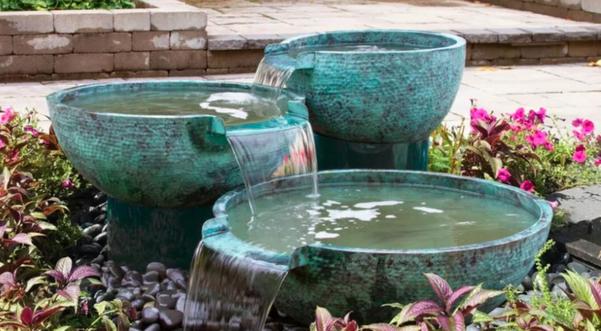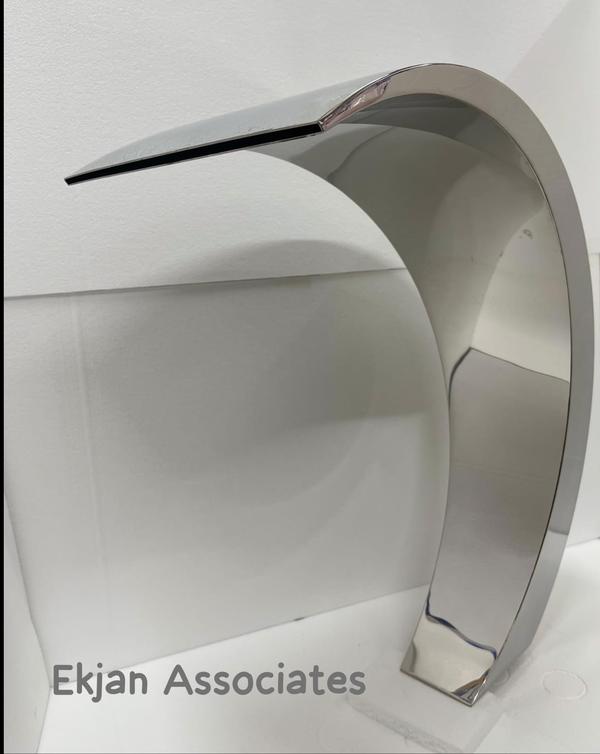
Engineering Excellence: The Technical Anatomy of Modern Water Fountains
Water fountains have evolved from simple ornamental features into sophisticated hydraulic systems that combine engineering precision with aesthetic appeal. The contemporary fountain design showcased here demonstrates the perfect marriage of technical functionality and visual elegance, featuring multiple vertical water jets arranged in a linear configuration.
System Architecture and Design
This fountain represents a multi-nozzle jet system integrated into a rectangular basin design. The linear arrangement of water jets creates a dynamic water curtain effect, with each nozzle operating independently to produce varying heights and flow patterns. The system incorporates a recirculating pump mechanism that draws water from the basin through a filtration system before redistributing it through the jet assemblies.
The decorative sphere element at the terminus serves both aesthetic and functional purposes, acting as a focal point while potentially housing additional water distribution mechanisms or LED lighting systems for nighttime illumination.
Technical Components and Specifications
Pump System Configuration
The fountain operates on a centrifugal pump system typically rated between 1.5-3 HP, depending on the desired jet height and water volume. The pump creates the necessary pressure differential to achieve the vertical water projection, with flow rates commonly ranging from 100-300 GPM (gallons per minute).
Nozzle Technology
The jet nozzles utilize precision-engineered orifices that control water flow velocity and pattern formation. These nozzles often feature adjustable flow restrictors, allowing for customization of water height and spray characteristics. The laminar flow design minimizes turbulence, creating clean, coherent water columns.
Filtration and Water Treatment
A comprehensive multi-stage filtration system maintains water quality and clarity. This typically includes:
- Mechanical filtration for debris removal
- Chemical treatment systems for algae control
- UV sterilization for pathogen elimination
- Automatic dosing systems for pH balance
Hydraulic Engineering Principles
The fountain's operation relies on fundamental hydraulic principles, particularly Bernoulli's equation and conservation of energy. The pump creates kinetic energy that converts to potential energy as water reaches its maximum height, creating the characteristic parabolic trajectory of each jet.
Pressure calculations are critical for optimal performance. The system must account for:
- Static head pressure
- Friction losses in piping
- Nozzle pressure requirements
- Elevation changes
Installation and Infrastructure Requirements
Electrical Systems
The fountain requires dedicated electrical supply with proper GFCI protection. Control systems often incorporate:
- Variable frequency drives (VFDs) for pump speed control
- Programmable logic controllers (PLCs) for automated operation
- Lighting control systems for aesthetic enhancement
- Remote monitoring capabilities for maintenance scheduling
Plumbing and Circulation
The closed-loop circulation system minimizes water waste while maintaining optimal flow rates. Key components include:
- Suction and return lines with appropriate sizing
- Isolation valves for maintenance access
- Pressure relief systems for safety
- Drainage provisions for winterization
Maintenance and Operational Considerations
Routine Maintenance Protocols
Regular maintenance ensures optimal performance and longevity:
- Daily water level monitoring and adjustment
- Weekly cleaning of nozzles and skimmer baskets
- Monthly inspection of pump performance and electrical systems
- Seasonal winterization in freeze-prone climates
Water Quality Management
Maintaining water clarity requires consistent monitoring of:
- pH levels (optimal range: 7.2-7.8)
- Total dissolved solids (TDS)
- Chlorine or alternative sanitizer levels
- Algae growth prevention
Advanced Features and Customization
Modern fountain systems often incorporate smart technology integration, including:
- IoT sensors for remote monitoring
- Automated chemical dosing
- Weather-responsive controls
- Energy-efficient LED lighting with color-changing capabilities
- Programmable water shows with synchronized music
Safety and Regulatory Compliance
Fountain installations must comply with local building codes and safety regulations, including:
- Electrical safety standards (NEC compliance)
- Water quality regulations
- Accessibility requirements (ADA compliance)
- Noise ordinance considerations
Cost Analysis and ROI
The initial investment in a quality fountain system typically ranges from $15,000-$50,000, depending on size and complexity. Operating costs include:
- Electricity consumption (pumps and lighting)
- Water treatment chemicals
- Routine maintenance
- Seasonal service requirements
Environmental Impact and Sustainability
Modern fountain design emphasizes water conservation through:
- Efficient recirculation systems
- Evaporation reduction covers
- Rainwater harvesting integration
- Energy-efficient pump technologies
Future Innovations
The fountain industry continues evolving with emerging technologies:
- Solar-powered operation systems
- Advanced water treatment using ozone
- Integrated air quality improvement features
- Smart water management algorithms
Conclusion
The technical sophistication of modern water fountains demonstrates how engineering excellence can enhance both functionality and aesthetic appeal. From precision hydraulic calculations to advanced control systems, every component works in harmony to create these captivating water displays. Whether for commercial installations or private residences, understanding these technical aspects ensures optimal performance and longevity of fountain systems.
The integration of smart technology and sustainable design principles positions modern fountains as both artistic statements and engineering marvels, capable of providing years of reliable operation while minimizing environmental impact.




